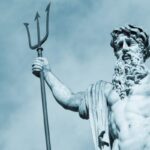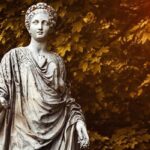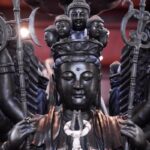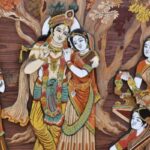We explain what the main gods of Olympus were, what they represented, their characteristics and various myths.
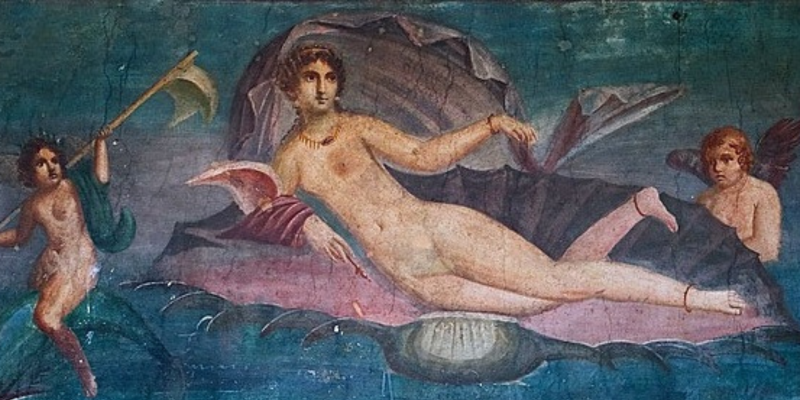
Who were the gods of Olympus?
The gods of Olympus were the most important gods of Greek mythology. Ancient Greece was a civilization that inhabited the eastern region of the Mediterranean Sea between the 12th and 2nd centuries BC. C., in part of the current territories of Greece, Türkiye, Egypt and Italy. Their culture had a great influence on the rest of the societies of the time and on later societies, such as that of Ancient Rome.
One of the most relevant characteristics of Greek culture was the great development of its mythology. Greek mythology was made up of a set of stories about their religious beliefs. Through stories about gods and goddesses, the Greeks explained the origin of the world, society and nature.
The mythology of Ancient Greece has enormous importance for Western culture. When the Romans conquered the Greek city-states, they adopted many elements of their religion, replaced the names of the deities, and continued the mythological tradition by adding new stories.
According to the Greek view, the world had been created by primary forces called titans. Among them were Uranus, Gaia, Cronus, Rhea and other important deities.
The children of the Titans, led by the god Zeus, rebelled against the primordial order and defeated their parents’ generation. This second generation of gods lived on Mount Olympus and was ruled by Zeus and Hera, as kings of all the gods.
The Olympian gods were many, but among them twelve stand out: Zeus, Hera, Athena, Poseidon, Aphrodite, Hephaestus, Ares, Apollo, Artemis, Demeter, Germes and Hades. The Greeks associated them with different phenomena of nature and also with different aspects of earthly life. They represented them as anthropomorphic figures (with human form), equipped with special symbols and objects that identified them.
In Ancient Greece, the worship of a particular god did not prevent the veneration of other gods, since it was a polytheistic society. In fact, mythological stories abound with stories about the competition of the gods to retain the worship of human societies.
- See also: Greek Goddesses of Antiquity
Zeus (Jupiter for the Romans)
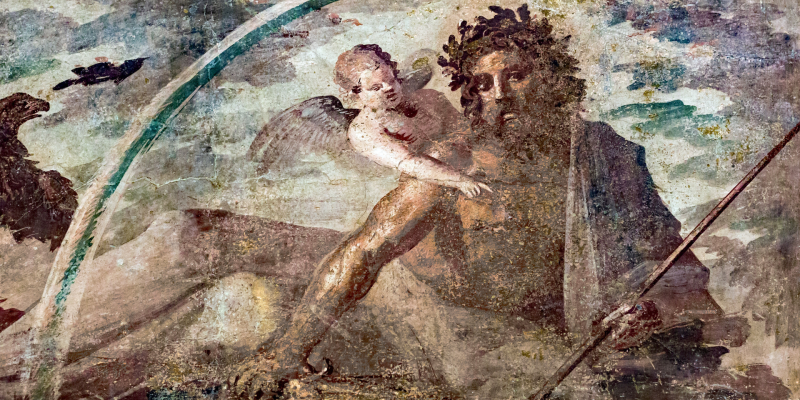
Zeus, the father god of the Olympian gods, was the regent of the pantheon and overseer of the universe. He was considered the owner of thunder, lightning and the energy of the world.
- Parents. Zeus was fathered by the titans Rhea and Cronus. He, fearful of being dethroned, ate his children as soon as they were born. When Zeus was born, Rhea gave Cronus a stone wrapped like a child in his place and managed to save him.
- History. Zeus grew up on the island of Crete and, once an adult, confronted his father, who cut open his stomach to rescue his siblings (Poseidon, Hades, Demeter, Hera and Hestia). At that moment the so-called Titanomachy began: the war between the gods and the primal titans, which culminated in the victory of the former. The victorious gods divided up the world: Zeus remained as god king of the heavens, Poseidon as god of the seas and Hades as god of the underworld. Zeus married his sister Hera and had numerous lovers. He was a begetting father and many great mythological heroes were part of his numerous offspring.
- Symbols. He was depicted as a bearded man with a scepter and a crown. It could also have the symbols of the lightning bolt, the eagle, the bull and the oak. However, in mythological stories Zeus was capable of taking on different forms in order to deceive someone or seduce his lovers.
- Worship. He was worshiped throughout Greece, especially in Olympia, where the Ancient Olympic Games were held, that is, the games in honor of the Olympic gods.
Hera (Juno for the Romans)
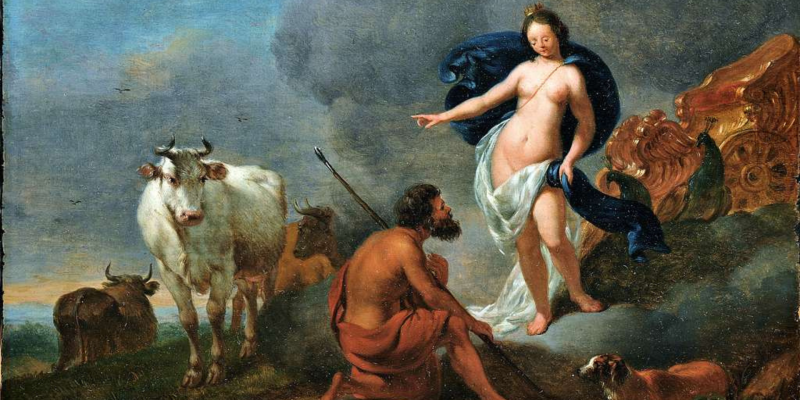
Hera was the Greek goddess of marriage, housework, motherhood and family. She held a place of authority among the gods because she was the sister and wife of Zeus. She was revered as the queen of Olympus.
- Parents. Hera was the daughter of the titans Cronus and Rhea. She was devoured by her father at birth, because he feared being dethroned by one of his children. Her brother Zeus, saved by Rhea, confronted Cronus, cut open his stomach, and freed Hera along with the rest of his siblings.
- History. Hera became the wife of Zeus. Although she was revered as the goddess of motherhood and marriage, she was a jealous and vengeful wife. Zeus committed constant infidelities and Hera undertook persecutions against her lovers and her illegitimate children. Such is the case of Hercules, for example, a hero for whom he professed an eternal hatred. With Zeus she had three children: Ilithia, Ares and Hebe.
- Symbols. She was represented in full body, wearing a cylindrical crown (called poles). She was associated with the symbols of the peacock, the lion, the cow, the pomegranate fruit and the poppy capsule.
- Worship. She was one of the first goddesses to be venerated by the ancient Greeks, especially in the region of Samos, where temples in her honor abounded.
Athena (Minerva for the Romans)
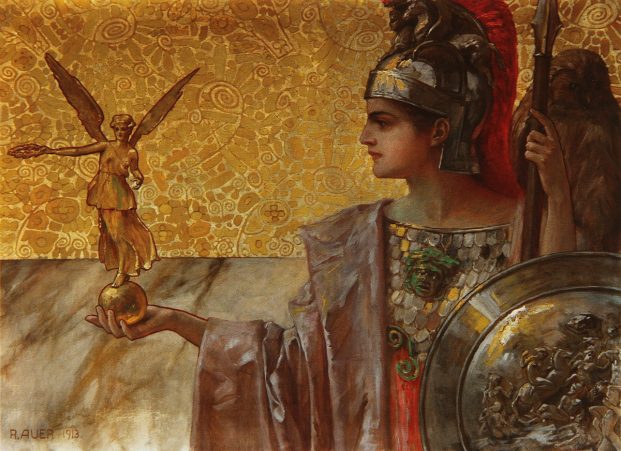
Athena was a warrior and chaste goddess, associated with wisdom, civilization, justice, science and freedom. She was one of the main deities of Olympus and was venerated throughout Greece, especially in the city of Athens and the region of Attica.
- Parents. According to some versions, Athena was the daughter of Zeus alone: one of the myths relates that she was born from the head of the father god after swallowing the goddess Metis, one of his lovers. There are also stories in which she was the daughter of Pallas or Palante, a winged giant whom she herself had to kill when he tried to rape her.
- History. Athena appeared in numerous myths as a chaste, fair and wise goddess, and her advice was valued in combat or in difficult situations. Particularly ingenious heroes, such as Odysseus, were said to enjoy favor among all people. Another important myth tells of his competition with Poseidon to win the government of the city of Athens.
- Symbols. She was described as an unbeatable warrior and was almost always represented with armor, helmet, spear and shield.
- Worship. Her cult was one of the oldest and came from the Cretan civilization, where she was worshiped as the goddess of the earth. In Athens they considered her the main goddess and dedicated the Parthenon temple to her.
Poseidon (Neptune for the Romans)
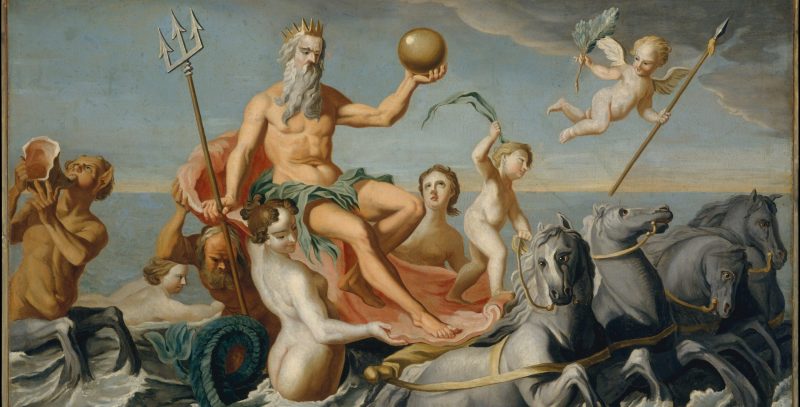
Poseidon was the god of the seas and earthquakes. He was considered one of the gods of wrath, and his anger could cause storms, tidal waves, sea monsters, and shipwrecks. Since Greek civilization was characterized by its maritime and expansionist culture, Poseidon was one of its main deities.
- Parents. Poseidon was the son of Cronus and Rhea. According to some accounts, he had been eaten by his father and then freed by his brother Zeus. In others, his mother Rhea hid him from Cronus and he was raised secretly by another woman.
- History. Poseidon managed to conquer the nymph Amphitrite and made her his wife. With her he had three children: Bentesicime, Tritón and Rode. He had affairs with other women and was the father of numerous Greek heroes, including the famous Theseus. Furthermore, he was considered the creator of the horse, an animal that he had conceived with a blow from his trident.
- Symbols. He was represented as a bearded man wielding a trident, accompanied by some marine animal. He was also represented next to the nereids (sea nymphs) or next to a horse.
- Worship. He was worshiped as the main god in many Greek cities, such as Corinth, while in Athens he was second in importance after Athena. It was common for sailors to make offerings to him before embarking on a voyage so that he would provide them with a calm and safe sea.
Aphrodite (Venus for the Romans)
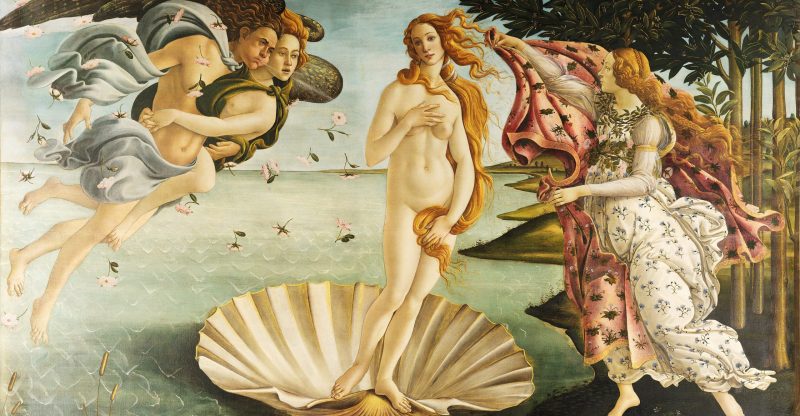
Aphrodite was the goddess of love, sensuality, beauty and passion. She was often described as a woman so beautiful that any man who saw her fell madly in love with her. It was a symbol of eroticism and at the same time of the sacred union between two lovers.
- Parents. According to mythological tradition, Aphrodite was born from the sea foam or from the seed of the titan Uranus, spilled into the sea by his son Cronus at the very moment of castrating him.
- History. Aphrodite was the unfaithful wife of the god Hephaestus, whom she cheated on with different beings. Among her lovers were the gods Ares, Dionysus and Hermes, as well as several mortals with whom she conceived mythical heroes, such as the Trojan Aeneas. In total he had sixteen children. His adventures cost him the enmity of Artemis, whose chastity represented values completely contrary to those of Aphrodite’s sensuality.
- Symbols. She was represented along with clams, oysters and other elements of marine nature. Sometimes, also with his son Eros. It was the subject of many notable works of art throughout history, such as the Venus de Milo (sculpture) and The birth of Venus by Botticelli (painting).
- Worship. She was venerated in different parts of Greece, particularly in Paphos and Corinth, usually through festivals in her honor, called Aphrodisias.
- Aphrodite
Hephaestus (Vulcan for the Romans)
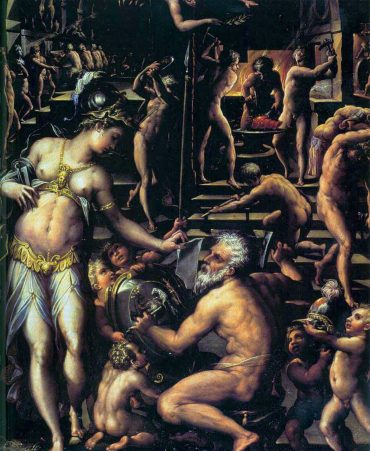

Hephaestus was the god of forging, metallurgy and fire, patron of artisans and blacksmiths. He resided with his forge inside Mount Olympus.
- Parents. In some accounts, Hephaestus was the son of Hera and Zeus. In others, he was only the son of Hera, who had fathered him after Zeus had Athena on his own. The myth goes that Hera, surprised by her son’s ugly appearance, grabbed him by the foot and threw him from Olympus, causing him to have the limp with which he is often depicted.
- History. The relationship between Hephaestus and the rest of the gods was tense, and in more than one story he was expelled from Olympus and then accepted back. He was credited with the construction of thrones, chains and magical armor. His works were legendary and had supernatural powers. He also created beautiful jewelry, with which he entertained his wife Aphrodite. Likewise, he forged the golden net with which he trapped her while she was with her lover, the god Ares.
- Symbols. He was represented as a bearded man with ugly features, lame (sometimes even with his feet backwards) and sweaty, commonly bent over his anvil with a hammer.
- Worship. He was venerated in all the manufacturing centers of Ancient Greece.
Ares (Mars for the Romans)

Ares was the Greek god of war. It was associated with bravery, tenacity, strength and masculine virility. He was the main protector of armies, rebels and righteous men, and also an assistant to the weak.
- Parents. Ares was the son of Zeus and Hera, who often despised him for his brutality and lack of self-control.
- History. In many stories, his ferocity in war is described and linked to the horrors and suffering in battle. His ability to objectively assess the courage of armies led him to fight for one side or another, and he himself could be wounded in combat, as when he faced Hercules and Athena. Ares was a god of numerous lovers, with whom he had more than sixty descendants. Aphrodite was his most important lover, his healer and ally in war.
- Symbols. He was often depicted as a young, virile man, hairless and dressed in armor, a spear or sword, and a red-crested helmet.
- Worship. He was revered by the military and armies that marched into combat. Its main places of worship in Ancient Greece were Thrace and Scythia.
Apollo
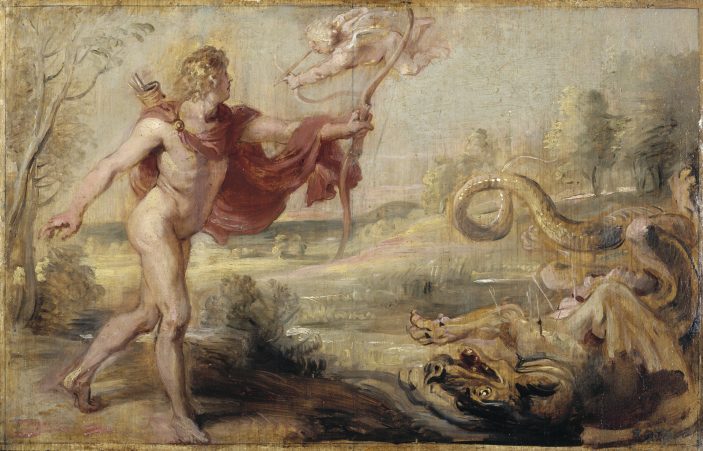
Apollo was one of the gods of Olympus and was the only one called the same in Greek and Roman mythologies. He was a god with many attributes and associated with various areas: poetry, music, prophecy and healing. It was also linked to law, order, morality and justice.
- Parents. Apollo was the son of Zeus and his lover Leto. Faced with the fury of Hera (Zeus’ wife), Leto had to hide to give birth to her twins. She found refuge on the island of Delos, where she gave birth first to Artemis and then, with her help, to Apollo.
- History. Although he was considered a just and wise god, in myths Apollo could also be harsh and spiteful, and his fury could only be appeased by his parents. He was capable of unleashing curses on mortals, while others enjoyed his favor or his loves. He used to have lovers of both sexes.
- Symbols. He was represented in different ways, depending on the aspect of his personality that was sought to be highlighted. He was often illustrated as a hairless young man, naked or dressed in a cloak, carrying a lyre, a zither, a sword or a bow and a quiver full of arrows. He could also be in the company of different animals and mythological beings, such as crows, wolves, snakes or griffins.
- Worship. He was the patron of the oracle of Delphi, where the Greeks consulted the prophecies to decide on social, legal and everyday life issues.
Artemis (Diana for the Romans)
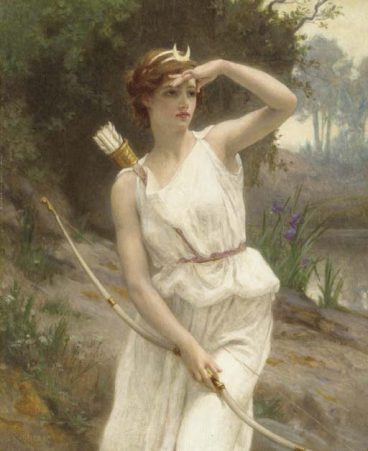
Artemis was a hunting goddess, associated with wild animals, virgin terrain, chastity and childbirth.
- Parents. Artemis was the daughter of Zeus and his lover Leto. His mother had to hide from Hera (Zeus’ wife) to give birth to her twin children. Artemis was the first to be born and instantly assisted her mother in the birth of her brother Apollo.
- History. Artemis was a goddess jealous of her chastity and refused matters of love and eroticism. She punished those gods and men who dared to look at her with lust. Her only lover was Orion, a great hunter, but under a trick from her brother Apollo, Artemis ended up killing him. Furthermore, in the stories she was illustrated as a vengeful goddess, who severely punished those who deceived or disappointed her.
- Symbols. She was represented as a young woman with a bow and a quiver full of arrows. Their usual symbols were the deer, the cypress and some hunting animals, such as the dog.
- Worship. She was especially venerated on the island of Delos, her supposed birthplace, as well as in Brauron, one of the oldest cities in Attica. There, there was a large temple dedicated to Artemis that was guarded by young women and priestesses. In Sparta, warriors dedicated sacrifices to him before marching into battle.
Demeter (Ceres for the Romans)
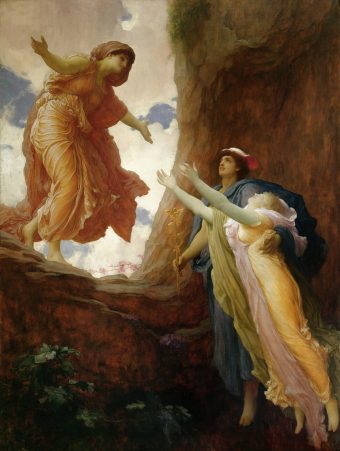
Demeter was the goddess of agriculture and the cycles of nature. She was revered as “bringer of the seasons” and was associated with the earth, fertilization and ceremonies.
- Parents. Demeter was the daughter of Cronus and Rhea. Just like her brothers, she was devoured by her father and then saved by her brother Zeus.
- History. Demeter was Zeus’s lover, as well as his sister. With him she conceived a daughter, Persephone, who Zeus promised to Hades (god of the underworld) without Demeter knowing. The most important story of Demeter told how she searched for her lost daughter, found her as the wife of Hades and reached an agreement so that Persephone would spend six months on earth and six months in the underworld, with her husband. This story explained to the Greeks the origin of the seasons: the months of happiness for Demeter were spring and summer, when everything bloomed, and the months of sadness were autumn and winter, when the goddess did not endorse the growth of the nature.
- Symbols. She was represented on a cart and with floral arrangements, fruits and elements of the harvest. Many illustrations also included images of his daughter Persephone.
- Worship. He is one of the oldest deities of the Greek religion. He was the protagonist, along with his daughter Persephone, of initiation rituals called eleusinian mysterieswhich were made in the city of Eleusis. In these celebrations, the Greeks made fasts and sacrifices to help Demeter in the search for her daughter.
Hermes (Mercury for the Romans)
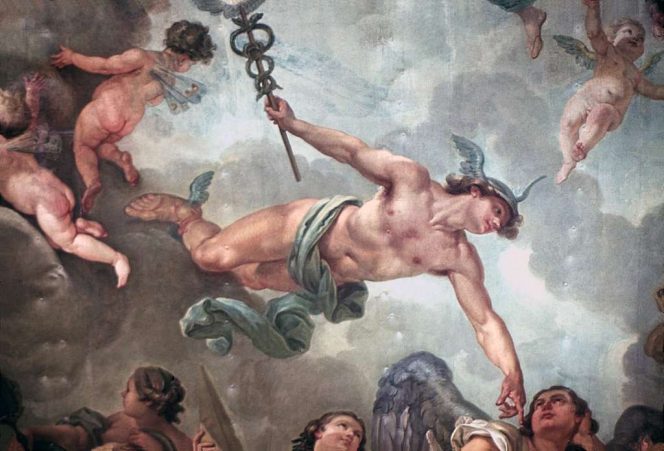
Hermes was one of the most versatile and fastest Greek gods. He was considered the messenger of the gods and, as such, protector of roads, borders, trade and travelers. He was also the king of communication and words, which is why he was associated with lies and deception. It was also associated with dreams and night services.
- Parents. Hermes was the son of Zeus and Maya. He was born in a cave on Mount Cilene, in Arcadia. He grew very quickly and in a very short time he was walking.
- History. Hermes was a god loved by much of the divine pantheon. In myths, he was identified as the creator of fire, races and some musical instruments (such as the lyre and the syrinx). He was also the guide of travelers to the underworld (as in the journeys of Demeter and Persephone). He had different lovers and descendants. Among his children were Daphne and Hermaphroditus.
- Symbols. He was represented as a slender young man, dressed in winged sandals or a hat with wings, to symbolize the speed with which he acted or thought.
- Worship. There were temples dedicated to Hermes throughout Greece, but his main place of worship was Arcadia. The festivals in his honor were called Hermeas and included games and competitions. He was considered the patron saint of athletes.
Hades (Pluto for the Romans)
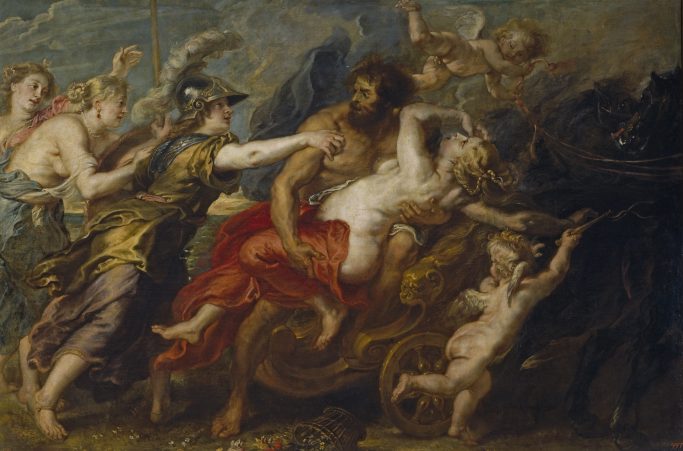
Hades was the god of the underworld. Although he was the brother of Zeus and enjoyed the same rank as him and Poseidon, his place on Olympus was usually strange because he lived in the remote world of the dead.
- Parents. Hades was the son of Cronus and Rhea. Like his brothers, he was eaten by his father and saved by Zeus.
- History. The underworld, the kingdom of Hades, was a dark and foggy place where all mortals went when they died. According to certain religious traditions of Ancient Greece, the transmigration of souls (their purification and oblivion to be reborn) took place there. Hades ruled this kingdom along with his wife Persephone as equals. They had a happy marriage without children.
- Symbols. Most of the time Hades was represented as part of the myth of Persephone. He was illustrated wearing a magical helmet that allowed him to become invisible.
- Worship. As he was a feared god, there were very few temples dedicated to him, and they even tried to name him as little as possible. The sacrifices made to appease his anger spilled blood into holes in the ground.
References
- Daly, K. (2004). Greek and Roman Mythology. A to Z. Facts on File.
- Evslin, B. (2012). Gods, Demigods and Demons. An Encyclopedia of Greek Mythology. Open Road Media.
- García Gual, C. (1992). The Olympic family. Introduction to Greek mythology. Alliance.
- Grimal, P. (1965). Apollo; Artemis. Dictionary of Greek and Roman mythology. Paidós.
- Kte’pi, B. (2008). Greek Mythology and Pantheon. In M.E. Ackermann et al. (Eds.). Encyclopedia of World Historyvol I: The Ancient World: Prehistoric Eras to 600 ce Facts on File.


